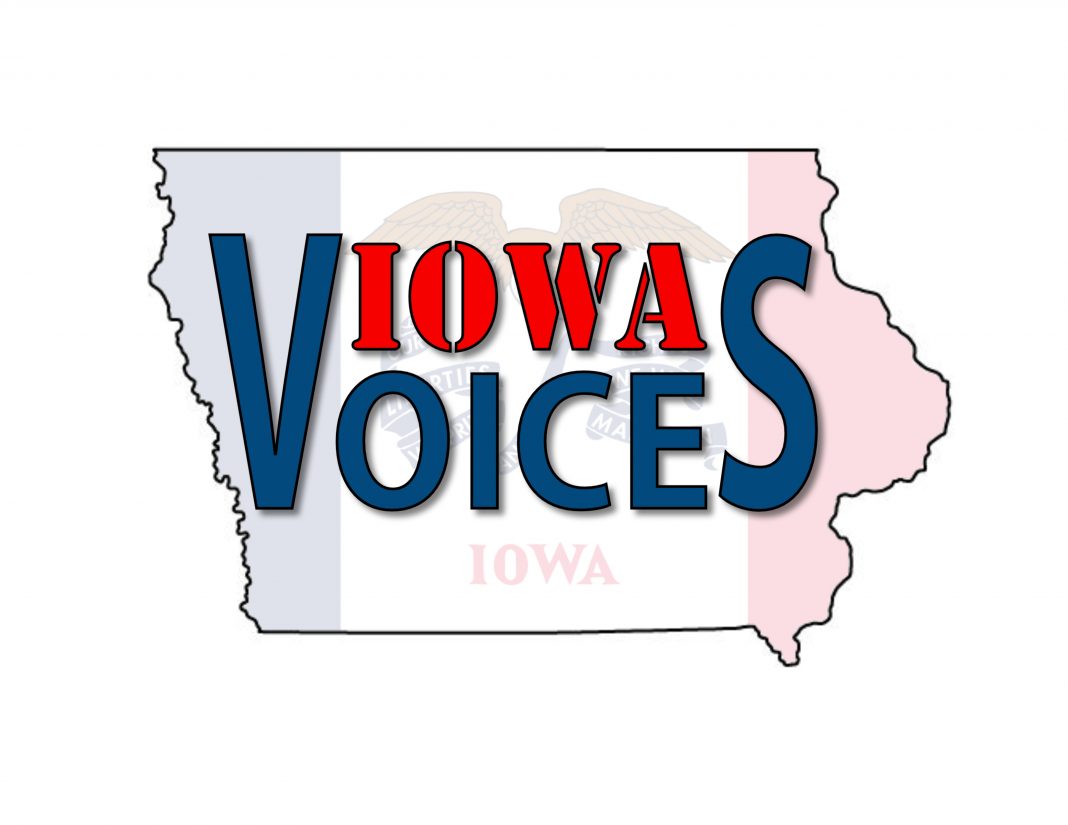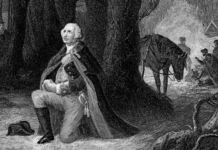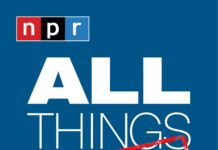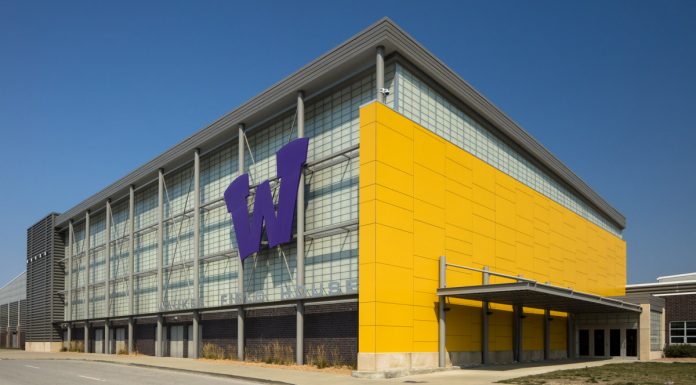In a May 30, 2018, newspaper article, Adam Wright, CEO of MidAmerican Energy, was interviewed regarding his company’s newest industrial wind project. He said MidAmerican would receive about $10 billion in federal production tax credits for the company’s investment, covering 100% of the capital costs needed to build the wind project. Even though production tax credits were being phased out, he said this newest project would qualify for the full amount of credits.
Republican and Democrat lawmakers alike support industrial wind and industrial solar across the state of Iowa because they’ve been told that the people support it. Most people do because they’ve been told it is cheap and good for our environment. I beg to differ.
Surviving on tax credits
In 2014, Warren Buffett, CEO of Berkshire Hathaway, which owns Iowa’s MidAmerican Energy, said, “I will do anything that is basically covered by the law to reduce Berkshire’s tax rate. We get a tax credit if we build a lot of wind farms. That’s the only reason to build them. They don’t make sense without the tax credit.”
Buffett was one of the main supporters and drivers of the production tax credits that would benefit his company.
Alliant Energy recently raised rates to pay for new transmission lines for wind energy. In 2015, the Iowa Utilities Board thought that MidAmerican Energy should have to pay more than 25% of the money they are receiving from the federal government back to ratepayers, since ratepayers are taking 100% of the risk. That’s according to an open letter to then Iowa Gov. Terry Branstad, written by former IUB member Sheila Tipton. MidAmerican declined vehemently, and Ms. Tipton wasn’t asked to stay on as a member of the IUB.
During the time when production tax credits were still available, many of the wind turbines in Iowa were “re-powered,” meaning they were outfitted with longer blades. According to the Internal Revenue Code Section 45, this allows them to start the 10 years of PTC over again. Even the wind turbines built by Iowa Lakes Electric Co-op in 2008, which supplies a fraction of the power to our farm and other customers in northwest Iowa, were 100% paid for by the federal government, according to ILEC President Rick Olson.
Now the renewable energy lobby through Joe Biden’s political platform has said that all they would need from our tax revenue to bring the U.S. to 100% renewable electric energy is $4.5 trillion. That would pay for wind turbines, solar panels, battery storage and doubling our entire transmission grid. Even if it were possible, I think it will cost a lot more.
Projects not increasing jobs
Solar panels are being placed by the thousands of acres per installation on Iowa’s world-class farm ground. The tax money that counties will receive will not replace what is lost by not farming the ground. Farmers will be displaced, as well as agronomists, tilers, grain elevator workers, seed dealers, ag pilots, mechanics and implement dealers to name a few. We are not gaining jobs; we are losing them.
Iowa’s industrial wind and solar industry only benefit a few, with the rest of us paying them. These power plants don’t even replace any other power plants. The coal plants in Iowa are being replaced by natural gas, not wind or solar. How could more power plants and more transmission lines be cheaper?
Are turbines and solar panels significantly cutting emissions?
Cutting emissions isn’t bad but wind and solar aren’t doing the heavy lifting. Most of the carbon emissions avoided in Iowa have been a result of switching from coal to natural gas. This year Iowa will lose its emissions-free nuclear plant 15 years early. We are told that it will be replaced by wind turbines. That is only possible when the wind is blowing the correct amount.
Iowa has 5,590 wind turbines covering over 2 million acres in the project areas, impacting thousands and thousands of homes. This only takes us to 43% of supplying not our energy but only 43% of our electricity by wind. Wind turbines only last about 10 to 15 years without being re-powered. How will we ever afford to even replace them without another government handout?
More ban industrial wind
Iowa’s rural residents do not want to live surrounded by hundreds of industrial wind turbines. Most every community has fought this onslaught with the majority of the contracts being signed by people who do not end up living within a mile of a wind turbine or even within the state.
Across the U.S. since 2015, a total of 270 rural communities have banned or blocked industrial wind. This does not count the number of cases communities fought and lost. In Iowa, we are beginning to see moratoriums and caps on industrial wind projects, as well as a few protective ordinances that do not allow room for wind turbine installations. Many wind-supporting county supervisors have been voted out of office because they don’t follow Iowa Code 331.301, which directs that they protect their constituents.
The wind companies admit negative impacts for neighbors within 2,640 feet of any 500-foot turbine such as “noise, visual blight, shadow flicker, vibration, air turbulence and wake.” I’ve never received a wind industry definition on their words “vibration, air turbulence and wake,” but in Iowa, we know what they feel like. Words such as sleeplessness, tinnitus, chest pressure, headache and depression describe the symptoms people experience who live close to wind turbines.
Greater setback
There is so much information on the health impacts that Madison County’s Board of Health has recommended 7,920-foot setbacks between wind turbines and residences. The wind industry insists on being allowed to build turbines only 1,500 feet from the foundations of neighboring homes. The wind lobby such as the Iowa Environmental Council inconclusively disputes the harm caused by wind turbines.
Now the Iowa Utilities Board is considering statewide regulations and allowing eminent domain to be used for these projects. The IUB is a three-member board that is in the pocket of MidAmerican Energy. MidAmerican stands to make a lot of money from supporting these policies. The Averch-Johnson Effect outlines the concept that utility companies only make more money if they build more infrastructure. Could this be the reason our investor-owned utility companies are so interested in industrial renewables?
In a letter prepared by FERC and sent to Congress, titled “Report on Barriers and Opportunities for High Voltage Transmission,” we see transmission being pushed for “corridors” across the U.S. that would be 1,500 to 3,500 feet wide and hundreds and hundreds of miles long for each corridor. They propose this land be taken by federal eminent domain to achieve their goals since rural landowners fight against these takings.
Do you believe in climate change?
If you believe in climate change or that cutting our emissions will somehow stop climate change from further developing, you should read a new book by Michael Shellenberger titled “Apocalypse Never.” He has been an environmentalist activist for 30 years and has received TIME magazine’s Hero of the Environment award. I was skeptical when I first met him, but his well-researched ideas and facts are influencing environmental thought. He says industrial renewables are hurting our planet, killing birds and bats, and causing poverty. He knows how important modern farming is to the world today.
The wind industry likes to say wind turbines kill fewer birds than buildings and cats kill, but we have far less turbines than buildings or cats. MidAmerican has lightly estimated its turbines will kill 13,134 birds with only 2,020 of its turbines each year in Iowa. The company says it will kill three times as many bats. We need birds and bats for agriculture and as part of nature.
Wind turbine blades, when they become worn out, are being buried in landfills by the hundreds. When the renewable boom ends, Iowa will have a lot of this left to clean up at our own expense. The wind industry claims they are recycling but hasn’t been able to give anyone a tour of a recycling plant. We are still waiting.
Can you now think of a reason to continue supporting industrial wind and solar in Iowa?
- Janna Swanson
Ayrshire












